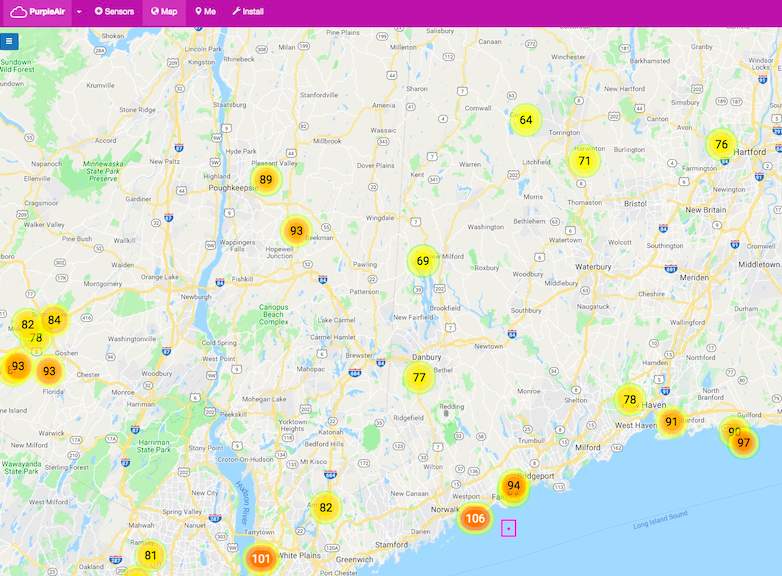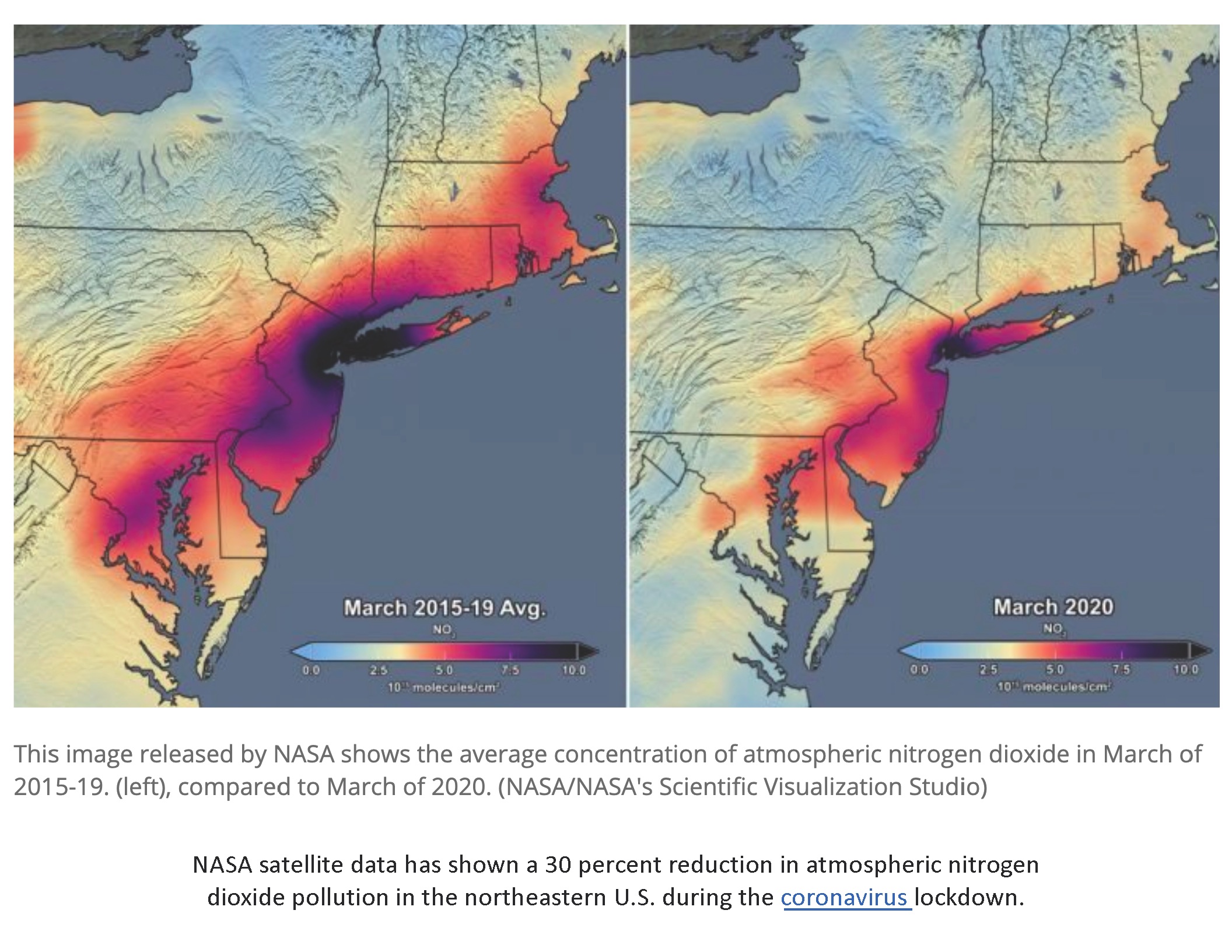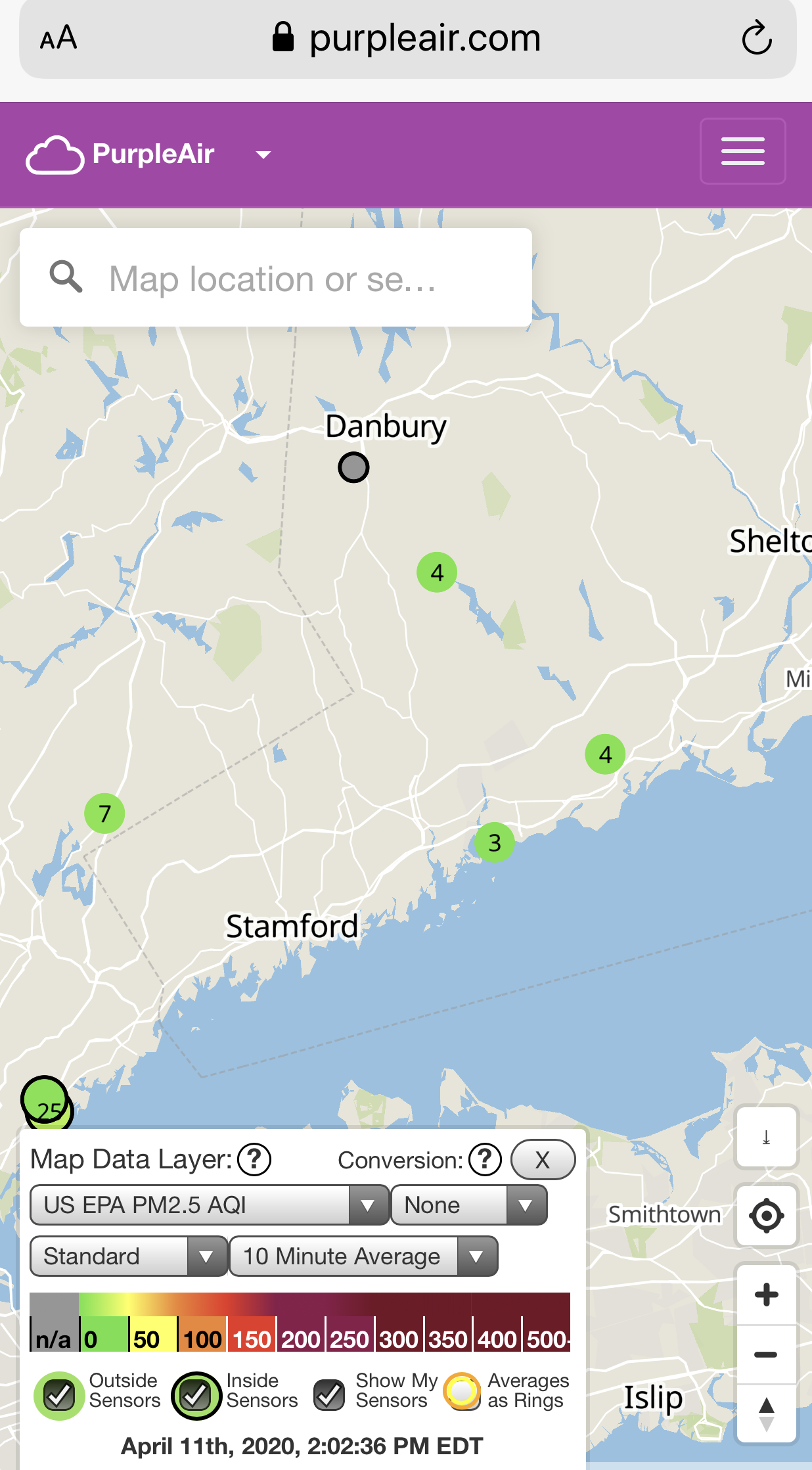Coronavirus has given us clean air. EVs could, too.
The photo above is from PurpleAir, which is a WiFi-connected, networked, sensor. The date is April 11, 2020. Individuals can buy these and the results are collectively monitored in real-time. Users have the ability to use an app to drill into the data to isolate specific geography. See all those green dots? That never happens in Fairfield County, the part of the state with the worst air pollution. It could, though. This is what an EV world (along with mass transit and bikeways) could be like.
And maybe it will be. An article in Elektrek reports that a study shows consumer intent to purchase EVs is on the rise as a result of this breath of fresh air we have been experiencing. The short-term outlook for EVs is bleak with a recessionary economy and low gas prices, but it would be a silver lining if this served to wake people up to what is possible.
This is a PurpleAir screenshot from 2018. Any value over 25 is, to some degree, unhealthy. Yellow is bad. Orange is very bad.

NASA has also published images, in this case before and after for the Northeast, showing the impact of the coronavirus social distancing measures yielding a 30% decline in nitrogen dioxide. A picture really is worth a thousand words.

According to ABC News, a study conducted by Harvard’s T.H. Chan School of Public Health found that “people with COVID-19 who live in areas with high air pollution levels are more likely to die than those who live in less polluted regions.” The study reported that “a small increase — one microgram per cubic meter — in long-term exposure to particulate matter leads to a 15% increase in the COVID-19 death rate.” They caution that findings are preliminary. It certainly makes intuitive sense.
As reported in the LA Times about a recent clean-air day in California, “If I could wave my magic wand and we all had electric cars tomorrow, I think this is what the air would look like,” said Ronald Cohen, a professor of atmospheric chemistry at UC Berkeley who has been studying the effects of the stay-at-home orders on air quality.
Coronavirus is a high price to pay to experience cleaner air. With the expanded use of EVs, we can keep it that way.


2 thoughts on “This is What an EV World Could Be”
Comments are closed.